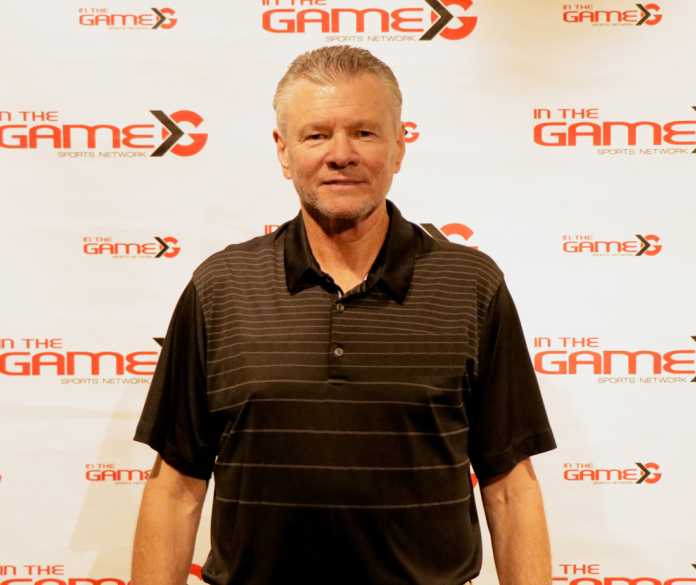Former Valdosta State Trainer’s Brainchild Also Benefits Team Medical Personnel
Any fan in the stands at a high school football game has seen this scenario play out, likely many times: The play stops and a referee signals an official timeout. A player is lying on the ground with an injury. Medical personnel rush out to render aid, while everyone in the stadium waits for the player to get up, which thankfully they usually do. While everyone is relieved that the player seems OK, further evaluation is necessary. Where do they go? Today, the first move is usually to the sideline medical tent. But that’s not always been the case.
It used to be that the player would be sat down or laid flat on a table behind the bench while team medical personnel would provide treatment – in front of thousands of people. It wasn’t an ideal or comfortable situation for anyone involved – not for the team doctor and especially not for the athlete who was having his or her injuries treated.
Thankfully, the solution would arrive in 2015.
The Sideline Tent
Early in 2015, University of Alabama head football trainer and former Valdosta State University trainer and alumni Jeff Allen had an idea: Find a way to create privacy on the Crimson Tide sidelines while treating and evaluating players during games. After all, sideline reporters and fans could see everything going on with a player being treated for an injury, without the benefit of the privacy that an exam room could provide.
Armed with the desire to provide Alabama players with more privacy while being treated, Allen took his idea to the university’s engineering department, where two students turned it into a reality. The new sideline medical tent was used for the first time on September 12, 2015 during Alabama’s game against Middle Tennessee. It would later become known as “SidelinER.”
The tent quickly proved its worth during a Tide home game on October 11, 2015. ESPN sideline reporter Holly Rowe attempted to give an update on an injury Alabama’s Reggie Ragland was being treated for, but because he was taken inside the tent, Rowe was unable to provide TV viewers with details. The sideline medical tent had not only done its job, it was making its debut to a national television audience, and a couple of months later it would be featured as a front-page story in USA Today.
The publicity caught the attention of football programs across the country, including other collegiate teams, NFL teams, and high school programs, who all showed interest in having one for their own players.
To meet the demand, Allen decided to team up with the two engineering students who had helped him design it. Together, Allen, Patrick Powell, and Jared Cassity established Kinematic Sports, the company that would provide the SidelinER to interested trainers and coaches.
One high-profile coach in particular was very interested and knew right away that his program wanted one. In 2016, Rush Propst was the head football coach at Colquitt County High School. According to sports medicine surgeon and Packers team doctor Kevin Collins, Propst became interested in the SidelinER sideline medical tent through connections he had at the University of Alabama.
“Rush was always pushing the envelope to get the best of the best, and through those connections, had learned about the sideline tent,” Collins said.
Soon Colquitt County was one of the first high school programs in the country to buy one of the tents. Dr Collins has served as the Colquitt team doctor since 2011 and also is in his 17th season as the team physician for the Valdosta State University football team. He is Board certified in orthopedic surgery and sports medicine, and he understands better than anyone how important privacy is when attempting to examine and treat an injured athlete, and the challenges of trying to accomplish that in front of thousands of people.
Privacy, Safety, and Convenience
“First and foremost, the sideline tent gives us the ability to evaluate and treat the injured athlete by giving them privacy, just as we would in a private patient room,” Collins said, adding that it also enables teams to “cut out distractions from them being worried about who’s staring at them, or who’s watching their every move. It allows us to reproduce what we do in the office with the same privacy.
“In addition to the privacy offered to the athlete, there’s also their safety to consider, as well as timely treatment,” Collins continued. “If you have a player with, say, a knee or ankle injury that prevents them from being able to walk, then a trip to the locker room makes it very tough.”
Such trips also delay how soon a doctor or trainer can begin examining the athlete. Thus the sideline tent’s convenient location is another advantage.
“We have a table, a light, and pretty much everything we need to start examining the athlete immediately, so it expedites the care and allows us to treat them just as effectively as we would in the locker room,” Collins said.
Propst, whose teams won seven state championships, including two at Colquitt County, summed up the advantages and practicality of the SidelinER tent.
“They are really convenient for your medical staff,” he said. “It’s just a common-sense approach to athletic training on Friday nights.”



